Audience segmentation is a fantastic way to hyper-focus your comms so that they resonate with your target audiences. It sees the process of using customer data and marketing goals to create audience segments and profiles.
With comms, it’s quite difficult to create something that every single person is going to respond positively to. Without having intel to create something that resonates with specific groups, comms can end up relatively generic and boring. Research published by Accenture showed that using personalised calls to action resulted in a 42% higher conversion rate than generic CTAs. This demonstrates just how beneficial going that extra mile for your audience pool can be. That's where effective audience segmentation comes in. By having these audience profiles, you can create several versions of your comms that hit the mark.
Here’s a handy checklist to help you easily segment your audience:
1) Identify your target audience
This is probably pretty obvious but there’s a lot that goes into determining your target audience.
There are four main insight pillars to help with segmenting your audience:
- Behavioural – audience engagement, conversion rates, communication preferences, device use etc.
- Demographic – Age, lifestyle, family status etc.
- Geographical – location, place of work etc.
- Attitudinal – cultural and social attitudes, personal interests, sentiments etc.
These four pillars aid you with asking those all-important questions: who do you want to reach with your comms? Who do you consider your main audience, and do you want to reach others too?
The first stage is a great place to sit down with your team and brainstorm what demographics are most likely to interact with your business, and how you can really grab their attention. Can you make that buyer’s journey a smoother process with these comms? What are their behaviours towards your channels?
You might find it useful to get an expert research and insights team to help you with this stage as often third parties are better able to analyse your brand, audience and competitor behaviours. Then all your research, insights and initial thought should be laid out on the table for a broader picture of your audience.
2) Determine whether all this extra work is necessary
We all like cutting corners and saving time, and the process of segmenting your audience can be quite lengthy. Here is where you use all your knowledge from the previous step to see if your audience will connect with one united message thanks to demographic similarities, or whether it’s broad enough to need multiple approaches. It may be beneficial here to test out different messages on employees who fit into these different areas, or with family and friends and see what option works best.
3) Is audience segmentation realistic with your budget?
Not only will it cost a little extra to determine these audience profiles, creating several suites of comms and campaigns is obviously going to cost a lot more than sticking with one general one. Here is where you should also look at your potential return on investment. Getting smart with your money will go a long way here. Can you reuse video content and graphics for multiple audience profiles? Can you foresee the use of audience profiling result in profit? It’s not just about money either. You need to think about whether your teams have the capacity to create all these extra assets, or whether you’ll need to outsource someone to help (like us!).
4) Determine segmentation criteria
If you’ve decided that segmentation is worth it, then it’s time to look at the segmentation criteria. You have your base knowledge and now it’s time to really hone in on what your segmentation criteria is. What age groups are you targeting? Which regions are most beneficial to you? Could specific interests, buzz words, or social platforms tie into this?
Solidify your clear marketing goals here and which audience segments they fit in to. This helps tie future campaigns together. The clearer your goals, the better – especially if these are more long-term goals.
Use any data you have from previous marketing campaigns, website visits and social media interactions and cross reference this with what you believe will factor your segmentation. If you start seeing areas that match, flag this. It’s likely that your current comms work well with these audience segments, and you can slightly hone for more effectiveness. However, most importantly, if you start seeing areas where there’s a lack of data for any of your audience segments, flag this as an area where these extra comms can be created. This is the ultimate deciding factor for whether that additional work is all worth it.
Data really is your friend here. Once you have a rough idea of the different personas you want to target and those distinctions between each one has been identified, continue to collect as much data as you can to help shape both a clear persona and creation of comms that hit the mark.
5) Look at the clear picture
Now you have a clearer picture of your marketing and segmentation goals, determine one last time whether this process is needed. If you can only create two clear audience profiles that aren’t that different, perhaps creating broader comms under one campaign would be an easier, more cost-efficient option than creating multiple assets.
However, if it is needed, create those audience profiles stating their defining characteristics and how your comms should be altered to suit this. If you’re struggling to do this, think of it like a game of guess who. You’re describing all these characteristics for specific audience bases. Instead of asking what colour hair they have, ask what age group they’re from. Replace whether or not they wear glasses with behavioural criteria such as what devices they use, or what their interests and values beliefs are.
It may even be beneficial to construct visual audience profiles with images of those who fit your demographics, building them character profiles from this.
All this knowledge you’ve collected on your audience has already made this process worthwhile. Now it’s time to use all of this to your advantage to create personalised, well-received comms that can aid in broadening your consumer base and increasing sales.
If you need help identifying your segmentation and marketing goals, we can help! Our Research and Insights team are a whizz in this department, and they can do all the hard work for you. If you’re interested, give us a call on 0207 937 8057 or drop us an email at anythingspossible@drpgroup.com. In the meantime, why not read our latest blog: What do we mean by audience segmentation?
/DRPG%2045th%20Anniversary/DRPG%2045th%20White%20-%20No%20Text.png)


 Back
Back

/Blog%20Images/AEO%20SEO%20-%20Digital%20Blog.jpg)



